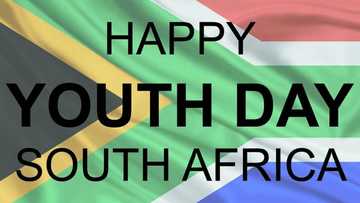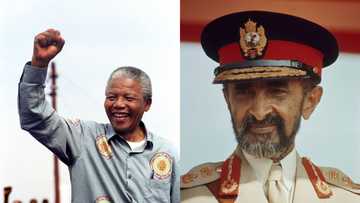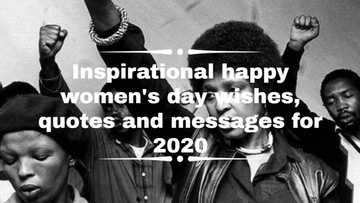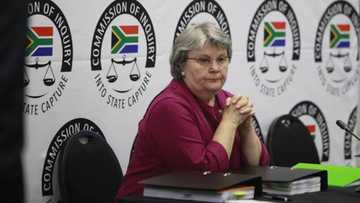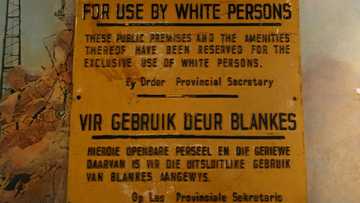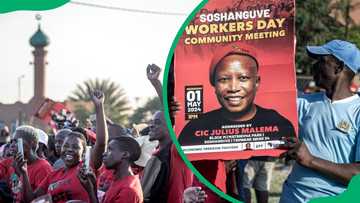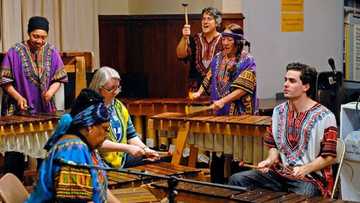History Post: Meet the Four Women Who Led the 1956 March Against SA’s Pass Laws
- History is a beautiful thing and National Women's Day, celebrated on 9 August every year in South Africa, is no exception
- The occasion marks the momentous strides made by the great women's demonstration of 1956, where roughly 20 000 women headed to the Union Buildings in Pretoria
- The women were demonstrating against legislation that was aimed at tightening the apartheid system's grip over the movement of black women in urban areas
PAY ATTENTION: Click “See First” under the “Following” tab to see Briefly.co.za News on your News Feed!
Women's Day in South Africa celebrate's the contributions of a group of revolutionary women who led the fight for equal human rights.
The occasion marks the momentous strides made by the great women's march of 1956, where women marched to the Union Buildings to protest against the carrying of pass books.
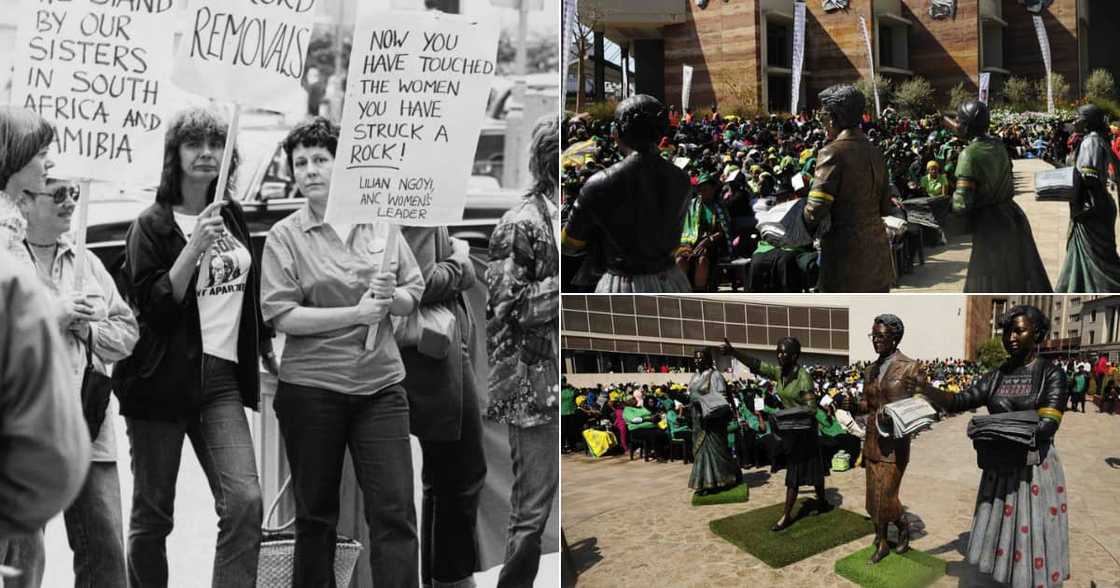
Source: Getty Images
About 20 000 women marched to the official seat of the South African Government in Pretoria to protest against legislation that, at the time, was aimed at tightening the apartheid system's control over the movement of black women in urban areas.
Perusing the virtual pages of the South African History Online website, Briefly News takes a look at four such women, whose stand on that fateful day, has been etched in history as one of the most defining in the country's evolution from an oppressive state to a democratic dispensation.
Background into the biggest revolutionary march in South African history
According to the SAHO, in the largest demonstration staged in the country's history, 20 000 women marched to Pretoria's Union Buildings some 65 years ago, to present a petition against the carrying of passes by women.
The women of all races and ethnic backgrounds shook the foundations of the country's landscape and presented their petition to the prime minister of the day, J.G. Strijdom.
Since then, the well-documented demonstration by those many thousands of women is celebrated and commemorated through a national public holiday on 9 August every year in South Africa.
This is known as National Women's Day and was first celebrated in 1995, effectively marking the 26th annual celebration of the day this year. The march against the pass laws was organised by the Federation of South African Women (FSAW or FEDSAW).
Helen Joseph
Helen Beatrice May Joseph, née Fennell, was born in Easebourne, United Kingdom, in 1905. She grew up in London, raised by both parents along with her brother, Frank. In later years, Joseph graduated with a degree in English from the University of London in 1927.
She is said to have then taught for three years in India, at a school for girls in Hyderabad called Mahbubia School. Afterwards, Joseph went to live in Durban, where she met and married dentist Billie Joseph.
Her service as an information and welfare officer in the Women's Auxiliary Air Force during the Second World War, and her subsequent decision to become a social worker, played a major role in sensitising Joseph to some of the realities of South African life.
In the 1950s, Joseph was one part of the brainchild of the African National Congress (ANC)'s white ally as well as the Congress of Democrats (COD). This was in addition to her role as the national secretary of the Federation of South African Women (FEDSAW).
She was one of the main organisers of the Women's March on 9 August 1956 before her arrest on a charge of high treason in December 1956 and ban in 1957.
She was the first person to be placed under house arrest in 1962, and she survived several assassination attempts, including bullets shot through her bedroom window late at night and a bomb wired to her front gate.
Joseph was diagnosed with cancer in 1971, and her banning orders were lifted for a short time before being reinstated for two years in 1980. Joseph passed away on 25 December 1992 in Johannesburg.
Ray Alexander Simons
Ray Alexander Simons, née Alexandrowich, was born on 12 January 1914 in Latvia. While at school, she is said to have displayed little fear in challenging authorities.
Her independent thinking suggested she pursue a career in medicine but, instead, gravitating to the allure of politics, Simons became active in the underground Latvian Communist Party at the age of 13.
According to historical records, she arrived in South Africa on 6 November 1929 and began to organise Black workers unions aged 16. A few days later, after being in the country for less than a week, Simons joined the Communist Party of South Africa (CPSA).
In the same year, she lost her first job when she took part in an anti-pass campaign and was the Secretary of the Communist Party in 1934 and 1935, during which time she recruited many women into the organisation.
In September 1953, she was served with banning orders. It was issued by Justice Minister Swart and this forced Simons to resign from the Food and Canning Workers Union (FCWU), where she was general secretary.
In April 1954, together with Helen Joseph, Lilian Ngoyi and Florence Mkhize, she helped found the Federation of South African Women (FEDSAW), which fought for women's rights and participated in drafting the pioneering Women's Charter.
PAY ATTENTION: Never miss breaking news – join Briefly News' Telegram channel
Her FCWU banning precluded her from attending the 1956 Women's March to the Union Buildings, but she was involved in its organisation and recruited about 175 women from Cape Town.
After another banning order in April 1954, she was forced to resign from FEDSAW. Simons remains honoured for her contributions to organisations like the Communist Party, ANC and FEDSAW, Unions, SWAPO and the New Women's Movement. She died on 12 September 2004, at the age of 91.
Lilian Ngoyi
Lilian Masediba Ngoyi was born in Pretoria in 1911 as one of six children. She obtained her primary schooling in Kilnerton in Pretoria and later enrolled for a nurses' training course.
However, Ngoyi eventually took up work as a machinist in a clothing factory where she worked for nearly a decade, from 1945 to 1956. She joined the ANC during the 1950 Defiance Campaign and was arrested for using facilities in a post office that were reserved for white people.
Her energy and her gift as a public speaker won her rapid recognition, and within a year of joining the ANC, she was elected as president of the ANC Women's League. When the Federation of South African Women (FEDSAW) was formed in 1954, she became one of its national vice-presidents, and in 1956 was elected as its president.
Ngoyi became a member of the Transvaal ANC executive in 1955, becoming the first woman ever elected to the ANC National Executive Committee (NEC) a year later.
On 9 August 1956, with the help of Helen Joseph, Rahima Moosa and Sophia Theresa Williams de Bruyn, she led the women's anti-pass march to the Union Buildings.
With thousands of petitions clutched in one hand, Ngoyi is recognised as being the one who knocked on Strijdom’s door to hand them over.
In December 1956, she was arrested for high treason along with 156 other leading figures and stood trial until 1961 as one of the accused in the four-year-long Treason Trial.
She was first issued her banning orders in October 1962, which confined her to the township of Orlando in Soweto and she was forbidden to attend any gatherings. In the mid-60s, she was incarcerated under the 90-day Detention Act and spent over two months in solitary confinement.
Her banning orders lapsed in 1972 but were renewed for a new five-year period in 1975. During the time of her banning, Ngoyi struggled to eke out a decent living. She reportedly suffered from heart disease and died at the age of 69 on 13 March 1980.
Amina Cachalia
Amina Cachalia, née Asvat, was born on 28 June 1930 in Vereeniging, Transvaal (moedern-day Gauteng) to parents Ebrahim Ismail Asvat and Fatima Asvat. She was the ninth child in a family of eleven children.
Her father died when she was about 12 and it was Mervy Thandray, a teacher who belonged to the Communist Party of South Africa (CPSA) and later secretary of the TIC, who became Cachalia’s mentor.
When she was 15-years-old, she transferred as a student to the Durban Indian Girls’ High School. Here, Thandray took it upon himself to develop the awareness of his students about conditions in South Africa.
Cachalia joined the Transvaal Indian Youth Congress (TIYC) and attended classes conducted by members of the Transvaal Indian Congress (TIC) to learn about the political situation in South Africa and ways to overcome injustice.
When the TIC began offering bursaries to South African Indian students to study in India, Cachalia became interested and applied. This is when she first met her husband-to-be, Yusuf Cachalia, Secretary of the TIC, who was interviewing applicants.
She later became actively involved in Congress work; meeting the likes of Ngoyi and Joseph, who worked at the Industrial Council. After she joined the ANC, she was hard at work distributing leaflets during the Defiance Campaign, making home visits and recruiting volunteers.
During the early fifties, Hilda Bernstein, a dynamic member of the South African Communist Party (SACP), in collaboration with Simons, explored the idea of a women’s federation that would cut across ethnic backgrounds.
They enlisted the aid of Joseph, Ngoyi, Josie Mpama (Palmer), Ida Mtwana as well as Cachalia. In 1954, the Federation of South African Women (FEDSAW) was launched. Ngoyi was the first President and Cachalia was elected as the Treasurer.
At the end of 1956, the police arrested one-hundred-and-sixty-five activists on charges of treason. Charges against sixty-five people were dismissed after a year and thirty were sent to stand trial in Pretoria in 1959.
In March 1961 all charges were dropped but in 1963, played a key role in planning and executing the escape of Arthur Goldreich, Harold Wolpe, Mosie Moolla and Abdulhay Jassat from the Marshall Square prison.
When the African National Congress Women’s League (ANCWL) was resuscitated in the 1990s, Cachalia served on the committee of the PWV [(union of Pretoria, Greater Johannesburg (Witwatersrand) and Vaal Triangle (Vereeniging)] region.
She was elected a Member of Parliament for the National Assembly in the first democratic elections in 1994 and was offered an ambassadorial posting, which she declined.
In 2004, the University of Witwatersrand conferred Amina Cachalia with a Doctor of Laws degree, honoris causa.
In the same year, the South African Government conferred The Order of Luthuli in Bronze to Cachalia for her lifetime contribution to the struggle for gender equality, non-racialism and a free and democratic South Africa. She passed away on 31 January 2013 in Johannesburg.
History post: The journey of MTS Oceanos, The day the cruise ship went down
In related news, Briefly News reported previously that the world witnessed an ugly scene back on 3 August 1991 when MTS Oceanos sunk due to uncontrolled floods.
The ship was built in France and owned by a Greek cruise ship company. Oceanos is one of the documented tragedies ever to happen in the sea and following a probe by maritime authorities, the captain and his crew were found to have been negligent.
Briefly News takes a look at a history piece on the MTS Oceanos cruise ship, launched in 1952 by Forges et Chartiers de la Gironde in France.
Enjoyed reading our story? Download BRIEFLY's news app on Google Play now and stay up-to-date with major South African news!
Source: Briefly News

